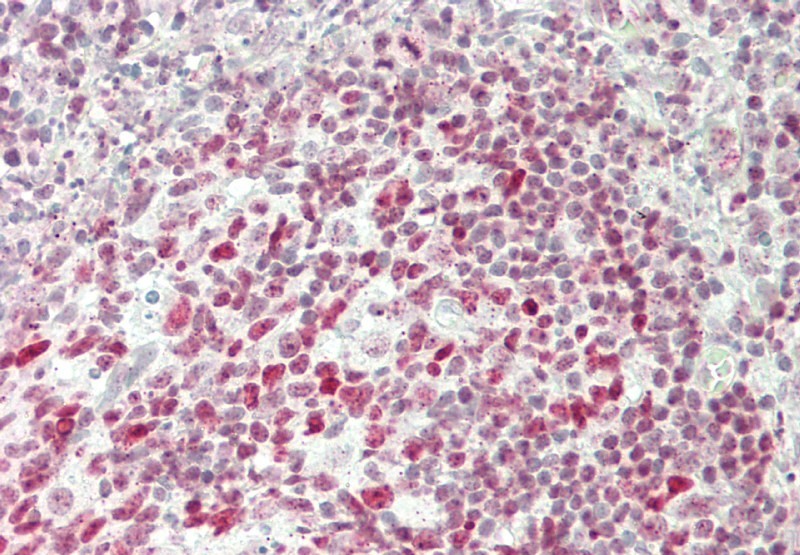Rabbit Polyclonal Antibody to HDAC2(Discontinued)

Figure-1 : Western blot analysis of HDAC2 Antibody at 1 µg/ml on Hela cell lysate using 1: HDAC2 Antibody, 2: HDAC2 Antibody pre-incubated with immunizing peptide, IRDye 800 Conjugated Goat Anti-Rabbit IgG was used as secondary antibody.
Roll over image to zoom in
Shipping Info:
For estimated delivery dates, please contact us at [email protected]
| Format : | Purified |
| Amount : | 40 µg |
| Isotype : | Rabbit IgG |
| Purification : | Immunoaffinity chromatography |
| Content : | 0.5 mg/ml, lyophilized with PBS, pH 7.4, containing 0.02% sodium azide |
| Storage condition : | The antibody is stable in lyophilized form if stored at -20°C or below. The reconstituted antibody can be stored for 2-3 weeks at 2-8°C. For long term storage, aliquot and store at -20°C or below. Avoid repeated freezing and thawing cycles. |
HDAC2 (Histone deacetylase 2) belongs to the histone deacetylase family. Histone deacetylases are responsible for the deacetylation of lysine residues on the N-terminal region of the core histones (H2A, H2B, H3, and H4) via the formation of large multiprotein complexes. Histone deacetylation forms the tagging for epigenetic repression and plays an important role in transcriptional regulation, cell cycle progression, and developmental events. HDAC2 also forms transcriptional repressor complexes by associating with many different proteins, such as YY1, a mammalian zinc-finger transcription factor. Rabbit Anti-HDAC2 Polyclonal Antibody is developed in rabbit using a KLH-coupled synthetic peptide derived from the carboxyl terminal residues of the human HDAC2 protein (Swiss Prot: Q92769).
ELISA: 0.05-0.2 µg/ml
Western blot: 1-2 µg/ml
Immunhistochemistry: 5-10 µg/ml
For Research Use Only. Not for use in diagnostic/therapeutics procedures.
| Subcellular location: | Nucleus, Cytoplasm |
| Post transnational modification: | S-nitrosylated by GAPDH. In neurons, S-Nitrosylation at Cys-262 and Cys-274 does not affect the enzyme activity but abolishes chromatin-binding, leading to increases acetylation of histones and activate genes that are associated with neuronal development. In embryonic cortical neurons, S-Nitrosylation regulates dendritic growth and branching. |
| Tissue Specificity: | Widely expressed; lower levels in brain and lung. |
| BioGrid: | 109316. 353 interactions. |
|
There are currently no product reviews
|


















.png)












